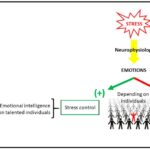Blindfold chess, the impressive feat of playing chess without seeing the board, has captivated chess enthusiasts for centuries. But how long does it take to master this skill? This article explores the time commitment and techniques required to learn blindfold chess.
Factors Influencing Learning Time
The time it takes to learn blindfold chess varies greatly depending on several factors:
- Chess Skill Level: A strong foundation in chess is crucial. Understanding strategic concepts, tactical patterns, and piece movement is paramount before attempting blindfold play. Players with higher ratings generally find it easier to transition to blindfold chess.
- Visualization Ability: The ability to mentally visualize the chessboard and piece positions is key. Some individuals possess a natural aptitude for this, while others need to develop it through practice.
- Memory Capacity: Remembering previous moves and anticipating future ones requires strong memory skills. Techniques like chunking and associating moves with visual cues can improve memory retention.
- Practice Frequency and Quality: Consistent and focused practice is essential. Regularly playing blindfold games and engaging in visualization exercises accelerates the learning process.
- Learning Method: Utilizing effective learning resources, such as books, software, and coaching, can significantly impact learning time.
Developing Blindfold Chess Skills
While there’s no magic formula for quickly mastering blindfold chess, several techniques can facilitate the learning process:
- Start Small: Begin with short games or puzzles, gradually increasing complexity as your skills improve. Try visualizing simple positions and reconstructing them on a physical board.
- Focus on Piece Relationships: Instead of memorizing individual squares, concentrate on how pieces relate to each other and control key squares.
- Verbalize Moves: Saying moves aloud or subvocalizing them reinforces memory and helps maintain focus.
- Analyze Games Blindfolded: Replay games from memory, attempting to visualize the positions and understand the reasoning behind each move.
- Practice with a Partner: Playing blindfold games against a friend or coach provides valuable feedback and allows for collaborative learning.
Time Expectations and Realistic Goals
Learning blindfold chess is a gradual process that requires patience and dedication. Most players take several months or even years to develop proficiency. While some individuals might be able to play a simple blindfold game after a few weeks of dedicated practice, achieving a high level of competence requires sustained effort.
Don’t get discouraged if you don’t see immediate results. Focus on making incremental progress and celebrate small victories. Even if you never become a blindfold chess master, the process of learning will undoubtedly enhance your overall chess skills and cognitive abilities.
Conclusion
Learning blindfold chess is a challenging but rewarding endeavor. The time it takes to master this skill depends on individual aptitude, dedication, and learning methods. Consistent practice, effective visualization techniques, and a strong chess foundation are key ingredients for success. Embrace the journey, enjoy the challenge, and you’ll be surprised at what your mind can achieve.
